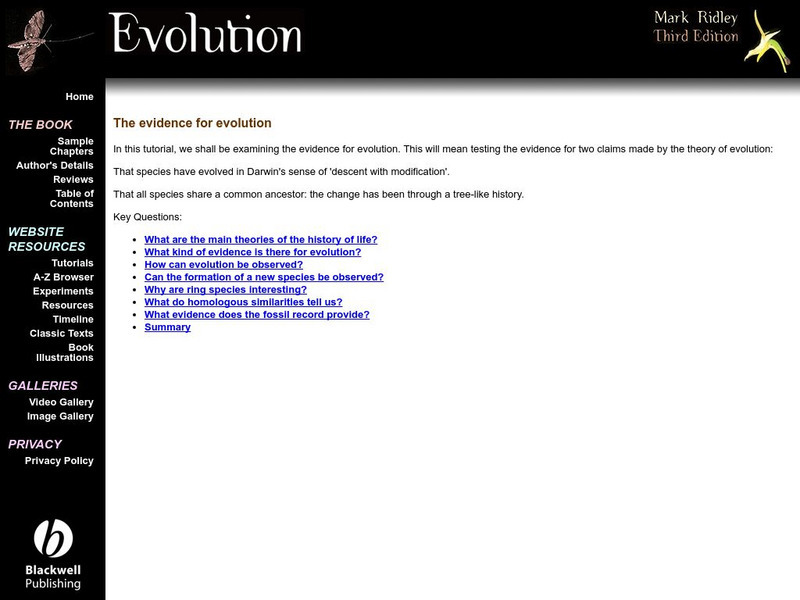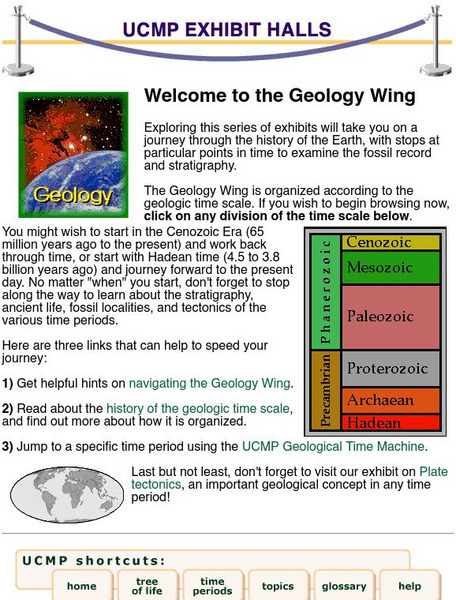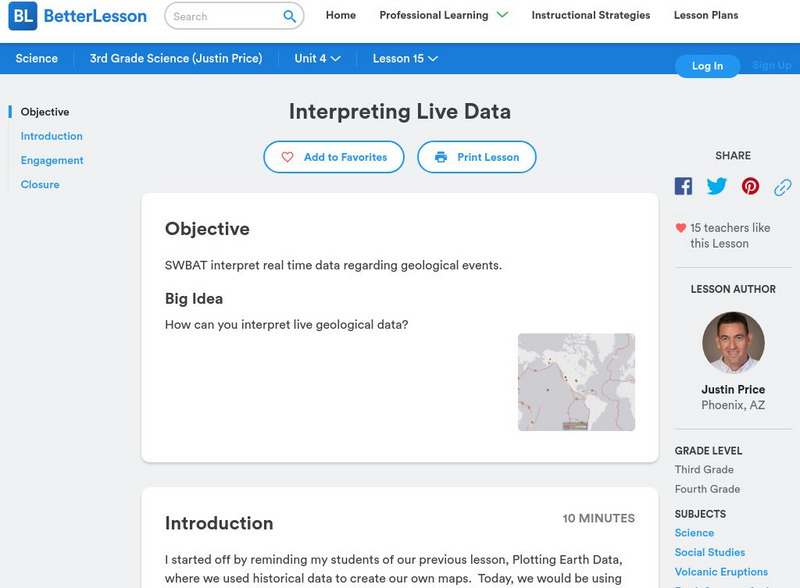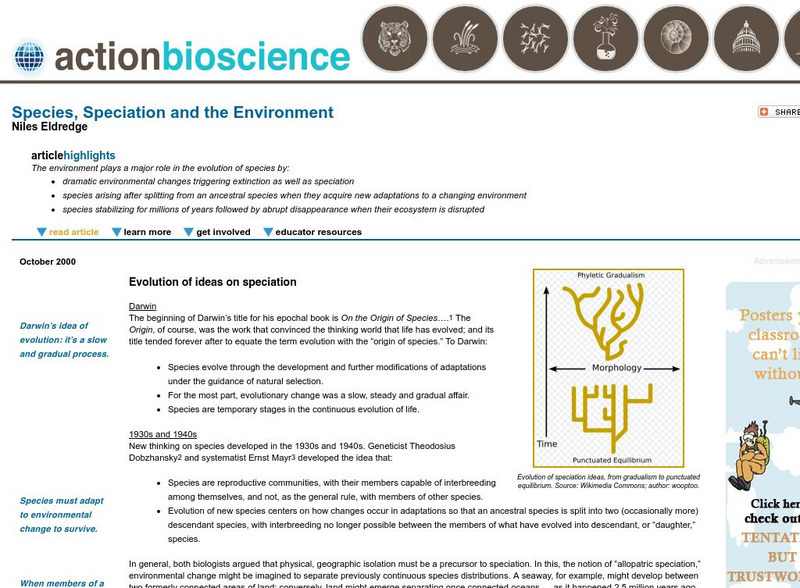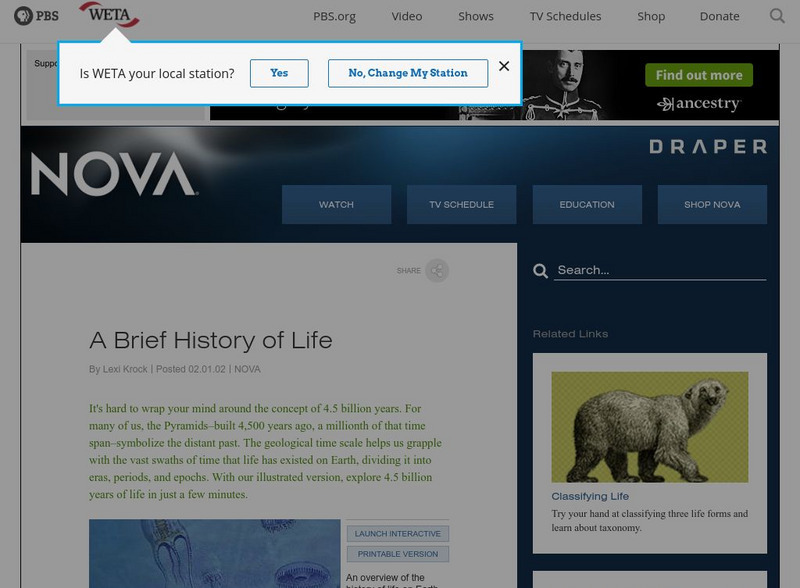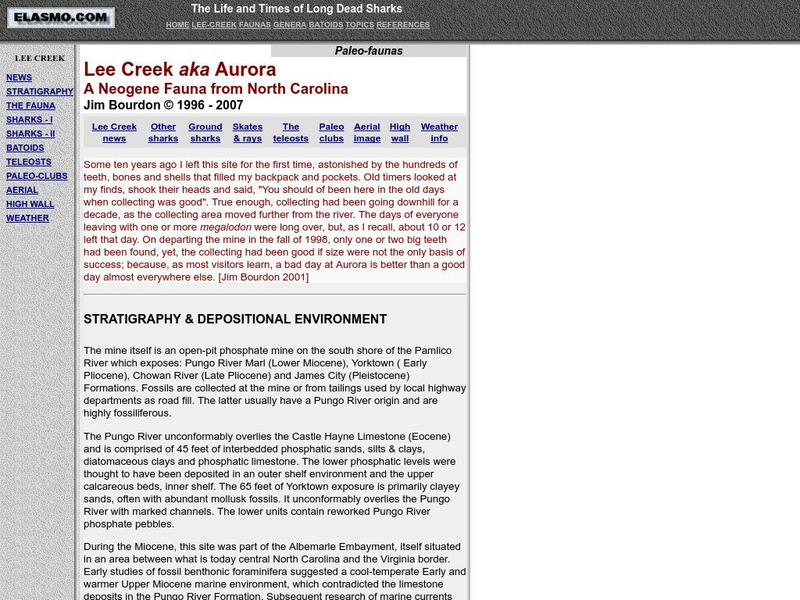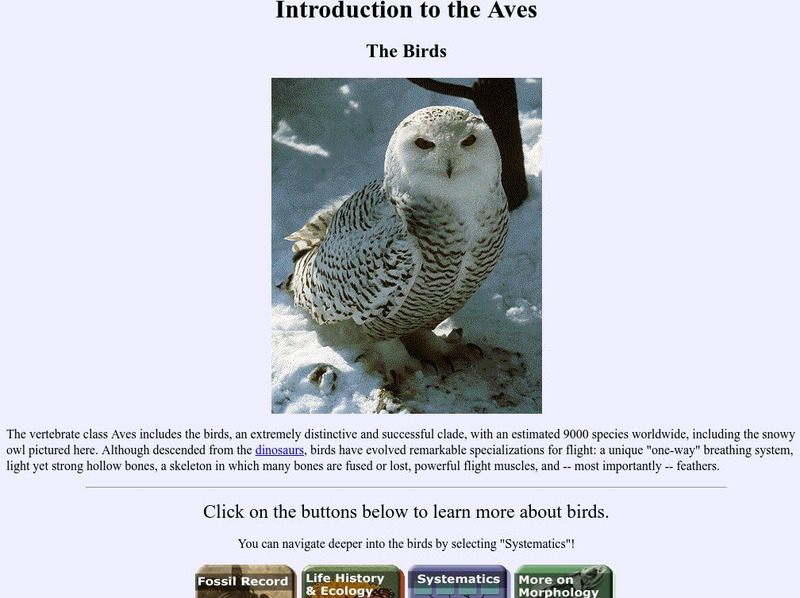Hi, what do you want to do?
Untamed Science
Untamed Science: Biology: Evolution: History of Life: The Cambrian Explosion
Learn about the Earth's evolutionary history during the Cambrian period. [3:25]
Science Education Resource Center at Carleton College
Serc: Investigating Karst Topography and Connection to Se Minnesota Sinkholes
In this field investigation, middle schoolers will be able to observe, record, compare/contrast a variety of sinkholes located in the southeastern Minnesota area, including a significant one at the Harmony Karst Interpretive Site. The...
University of California
Ucmp: Brown Algae
Life cycle of brown algae, fossil record, morphology, ecology, and systematics.
University of California
Ucmp: Introduction to Chordata
This site from UC Berkeley is an excellent site about the animal phylum chordata. Click on various sections to learn more, covering topics such as the fossil record, life history & ecology, systematics, and morphology. This site is a...
University of California
Ucmp: Diatoms
Fossil records of diatoms. History, ecology, systematics, and morphology.
University of California
Ucmp: Introduction to Artiodactyla
This site explores the artiodactyla, and includes a focus on fossil records, life history and ecology, systematics, and morphology.
University of California
Ucmp: Introduction to Bacteria
This site provides an introduction to bacteria and examines fossil records, life history and ecology, systematics, and morphology.
Australian Museum
Australian Museum: Fishes: Coelacanth
An article on modern-day discoveries about the prehistoric coelacanth fish. Read about the geographic distribution, classification, fossil record, and economic and social impacts of the animal.
American Geosciences Institute
American Geosciences Institute: How Can We Tell How Old Rocks Are?
Find out how scientists can find out the age of the rocks they are studying.
NASA
Math Lesson Plan: Cyanobacteria Races: Cyanobacteria Motility [Pdf]
A comprehensive lesson plan about the movement of cyanobacteria includes a class experiment.
Other
The Evidence for Evolution
These pages are part of a site called "Evolution," that accompanies a textbook by the same name. Mark Ridley is the author, and in this section he discusses the evidence for evolution.
Famous Scientists
Famous Scientists: Mary Anning
This article reviews the scientific contribution and life of Mary Anning.
American Museum of Natural History
American Museum of Natural History: Ology Quiz: What Do You Know? Paleontology
Test your knowledge of paleontology by taking a quick quiz.
University of California
University of California Museum of Paleontology: Geology and Geologic Time
This site provides information about the geologic relationships of rock layers, as well as much about geologic time and the history of Earth.
University of California
Ucmp: Introduction to the Annelida
Berkeley offers a great site on segmented worms titled, "Introduction to Annelida, Everybody's favorite, worms."
CK-12 Foundation
Ck 12: Earth Science: Continental Drift
[Free Registration/Login may be required to access all resource tools.] Describes Wegener's continental drift hypothesis and his evidence for it.
Better Lesson
Better Lesson: Interpreting Live Data
Learners will be using live data about volcanoes and earthquakes to look for patterns and understand why natural disasters may or may not be able to be predicted. Resources include helpful websites, a video of the instructional activity...
American Institute of Biological Sciences
Action Bioscience: Species, Speciation and the Environment
The American Institute of Biological Sciences offers this article by Niles Eldredge, evolutionary theorist and curator at the American Museum of Natural History. Eldredge begins with Darwin's theories and summarizes subsequent thought,...
Famous Scientists
Famous Scientists: Charles Lyell
Learn about the works of Charles Lyell, a geologist who studied Earth's history.
PBS
Nova: A Brief History of Earth
This timeline is a good resource if you are looking for brief descriptions of the geologic periods. Descriptions include pictures of common organisms for each period and the range of time covered by each period.
Cosmo Learning
Cosmo Learning: Principles of Evolution, Ecology and Behavior
A collection of video lectures introducing beginning biology students to the principles of evolution, ecology, and behavior. The course was taught three times a week for a semester at Yale University. The course discusses concepts of...
Other
Elasmo: Lee Creek Fauna
A list of some representative Rays and Skates found in the fossil record of a particular area. A good look at the body form of a number of these animals.
University of California
Ucmp: Birds Decendents of Dinosaurs
This site from the University of California, Berkeley contains general information and links to information about the fossil record of birds, the life history of birds, the systematics of birds, and the morphology of birds.
University of Wisconsin
The Why Files: Motherly Reptiles
Explore the idea of live birth in prehistoric reptiles.







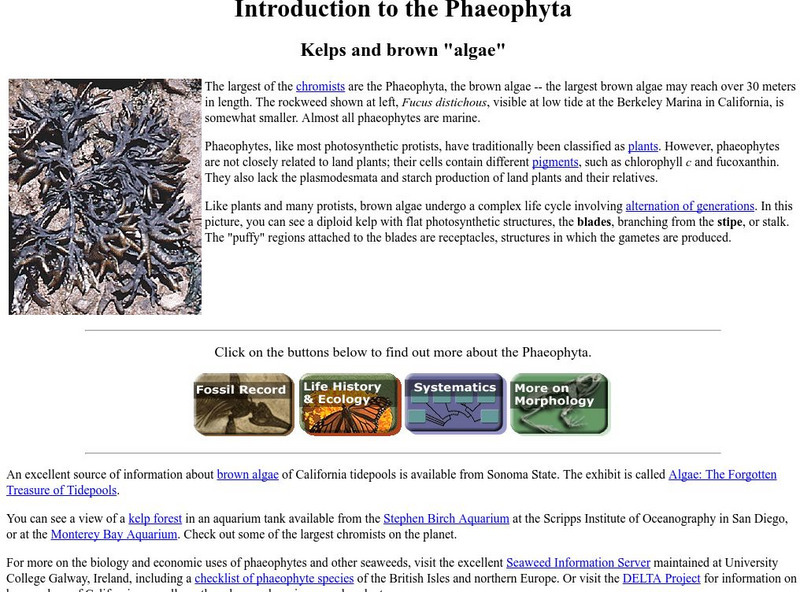

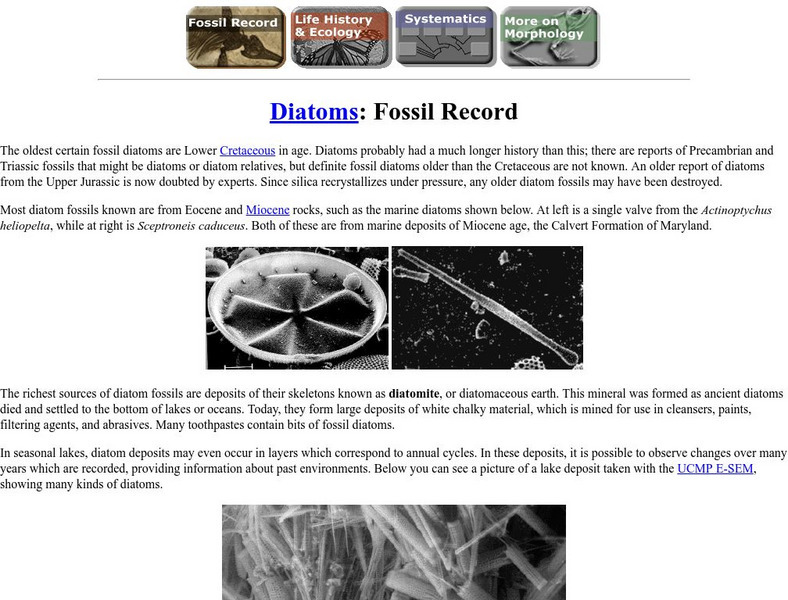
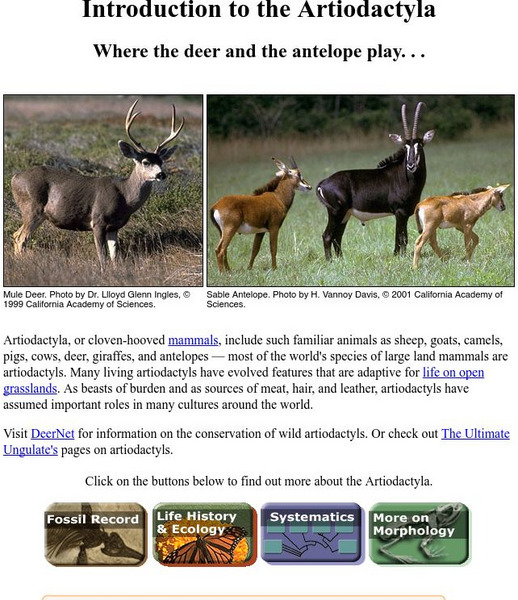



![Math Lesson Plan: Cyanobacteria Races: Cyanobacteria Motility [Pdf] Lesson Plan Math Lesson Plan: Cyanobacteria Races: Cyanobacteria Motility [Pdf] Lesson Plan](https://static.lp.lexp.cloud/images/attachment_defaults/resource/large/FPO-knovation.png)
